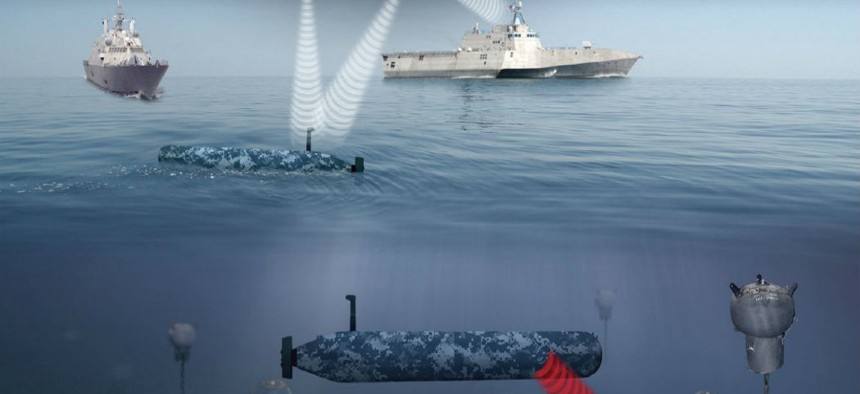Wireless underwater charging tech will bring a new level of autonomy for UUVs
Naval scientists are using resonant wireless power transfer to create underwater unmanned vehicle chargers for more mission capability and less risk.
Unmanned underwater vehicles (UUV) may not require on board crew to operate them, but they do require power. Re-charging used to mean surfacing at the nearest ship or land base. Now, scientists at the Space and Naval Warfare Systems Center Pacific (SSC Pacific) are developing technology that can re-charge UUVs underwater.
“This type of technology is going to widen the array of missions the Navy can use UUVs for. Having a UUV that can travel long distances gathering intel from ports and areas of the world our surface ships and underwater craft typically can’t go is going to increase the effectiveness of them,” said Dr. Graham Sanborn, Engineer at SSC Pacific. “It’s also going to make missions safer, because service members will no longer need to accompany the machine.”
According to SSC Pacific, the capability was first demonstrated with a cellphone sealed in a plastic bag and placed on top of the underwater charging station. This early test of underwater wireless power transfer was a success, reported Wayne Liu, Project Manager at SSC Pacific.
Resonant wireless power transfer forms the basis of the technology behind underwater charging. According to a report by industry developer WiTricity Corporation, resonant wireless power transfer uses amplification technology to convert DC power current into radio frequency waves. These frequency waves use resonance to project power, which can be transferred to a charging object with a resonance receiver tuned to the same frequency.
However, moving this process beneath the ocean’s surface, as SSC Pacific is doing, adds some complicating factors. A primary obstacle is the difference in conductivity between air and seawater. For example, the technology being developed by the team at SSC Pacific must take into account the fact that seawater starts becoming less conductive at a frequency of 20kHz, according to research published by the Naval Surface Warfare Center Carderock Division.
An additional component of SSC Pacific’s research is developing chargers that are standardized across multiple UUVs.
“Currently if the Navy buys one underwater vehicle and some sort of charger it will only work with that brand or that particular type,” explained Dr. Alex Phipps, chief of the advanced integrated circuit technology branch at SSC Pacific. “What we aim to do is capture the common elements that could be reused for multiple vehicles and create a standard that we can give to industry so that anybody that wants to sell a vehicle and work with the Navy can conform to that standard and there’s interoperability across the fleet.”
SSC Pacific has not yet announced when the new technology will become available, however researchers seem optimistic that suspending missions and putting sailors at risk for UUV charging will soon no longer be necessary.




